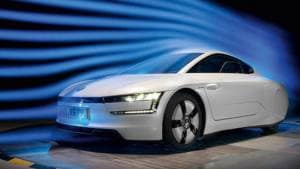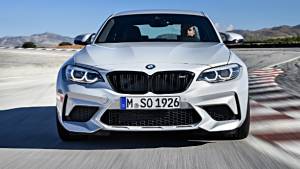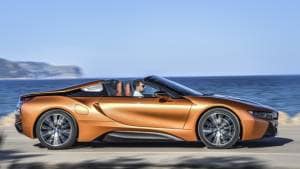BMW i8 powertrain explained
When we tried to explain Toyota's Hybrid Synergy Drive it took quite a bit of explaining. But since BMW did away with all mechanical linkages between the i8's electric and petrol powertrains, the explanation is much simpler.
The i8 wears a 131PS (96kW) electric motor at the front and a 231PS (170kW) three-cylinder petrol engine at the back. The two power units are controlled by electronics that decide which one or both to use in which situation (or depending on mode selection). It also decides how to apportion the power between the two units.
What do they manage togther? The BMW i8 promises to hits 100kmph in just 4.4 seconds. In all electric mode with a fully charged battery, as much as 37km of range is available and the all-electric top speed is 120kmph. On the EU test cycle, the i8 also returns a stunning 47kmpl! But in the real world, something like 20kmpl is eminently possible in commuter traffic with both power units functioning. BMW clarifies though that the biggest economy and emissions gains are within the city driving framework while longer highway work drops the advantage. The explanation is simple - the more you use the petrol engine, the more the i8's advantage dissipates. Overall though, BMW say over a 200-250km journey, the i8 should still be as much as 25 per cent more efficient than a regular sportscar.
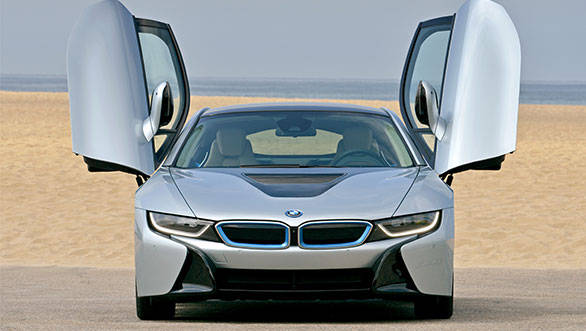
Now let's talk about the petrol engine. BMW uses a new TwinPower Turbo 1.5-litre three-cylinder engine. Along with this and the electric motor, BMW also developed the power electronics and the battery from the ground up for the i project. This is BMW's first triple cylinder engine and project leader Carsten Breitfeld said that for the purposes of the i8, they found that the three-cylinder engine offered the optimum balance between power, economy, emissions and physical size.
The 154PS/litre specific output is similar to BMW's other sporty engines but is actually the highest in the whole group. The triple draws upon BMW's extensive inline six cylinder engine expertise and uses direct fuel injection along with the twin scroll turbocharger, variable valve lift control and more. The result, says BMW, is a balancer-shaft equipped triple that matches well with a multi-stage damper equipped automatic transmission that drives the rear wheels offering as much as 320Nm.

Inside the car, the engine feels remarkably linear and rev happy while BMW's amplified and equalised (but not synthesized) engine note makes the i8 feels extremely pleasing in sport mode with the throttle buried in the eco-friendly carpet.
The power unit in front, of course, is the electric motor, also developed and build by BMW. This thing makes 250Nm. All the time. Which means the acceleration in full-electric mode is well, electric. There's nothing more than a bit of whine and the car gathers momentum so eagerly it can make you giddy and giggly the first couple of times. As we noted earlier, the all-electric top speed is 120kmph and on the EU cycle 37km of emission and noise free running is possible.
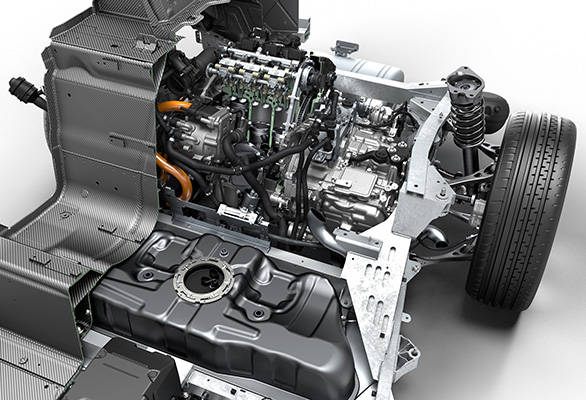 The i8 is also a plug-in hybrid which means you don't have to rely on the turbo-triple for battery charging
The i8 is also a plug-in hybrid which means you don't have to rely on the turbo-triple for battery charging
The i8 is also a plug-in hybrid which means you don't have to rely on the turbo-triple for battery charging. You can just plug it in at home (or at a BMW i Wallbox or a public charging station). BMW say the battery was designed to last the life of the car and the warranty is eight years or 100,000km.
How do these units work, then? The rear wheels are powered by the triple cylinder engine via a six-speed automatic and the front wheels are driven by the electric motor, which gets a two-speed automatic transmission. Together that means 362PS of power and 320/250Nm of torque at the rear/front of the car. BMW's power control electronics manage the power sources to ensure the i8 always has enough power, tight control over the economy as well as a BMW-specific rear-wheel drive feel in the corners. With the throttle in the carpet, the car is limited to 250kmph.
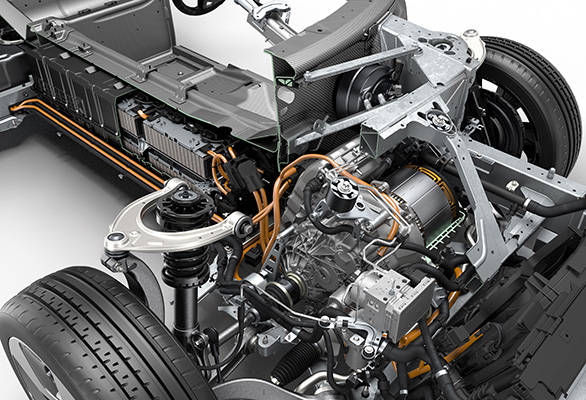 BMW has interlinked the navigation and the powertrain management systems so that they can together work out how to maximise the use of the electric power
BMW has interlinked the navigation and the powertrain management systems so that they can together work out how to maximise the use of the electric power
Another interesting feature is BMW has interlinked the navigation and the powertrain management systems so that they can together work out how to maximise the use of the electric power and keep fuel consumption down to the minimum.
Obviously, the driver has to have some say in this - it is a BMW not a Google car. The driver gets to select from five modes - Sport, Eco Pro and Comfort with the latter two also available in selectable all-electric modes when you press the eDrive button. In comfort mode - the default setting, the range is 600km on the EU cycle. The power electronics not only monitor the two power units but also other systems like the aircon, seat and mirror heating in Eco Pro mode to eke out every last possible kilometre per litre.
When you switch to sport mode, you get sequential manual gears, sharper throttle response, a stiffer chassis attitude and maximum boost from the electric motor. The power electronics also switch to the highest energy recuperation state to keep the battery as charged up as possible. Also sharpened up is the electric power steering and the Dynamic Damper Control.
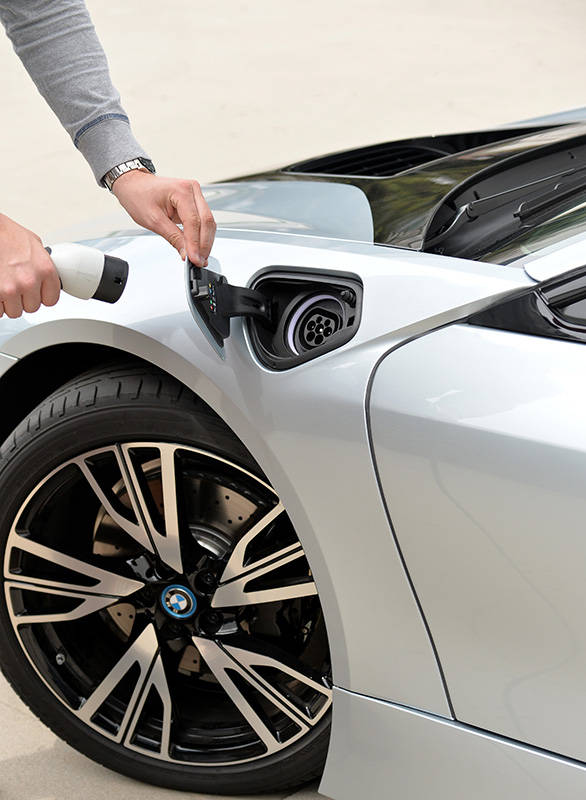 You can just plug it in at home (or at a BMW i Wallbox or a public charging station)
You can just plug it in at home (or at a BMW i Wallbox or a public charging station)
At any point, in any all-electric motor, is the battery charge level is too low or the pressure on the accelerator is high enough, the power electronics can wake up the petrol engine to deliver the desired performance near-instantly.
Click here for an explanation about the i8's radical styling
Starts Rs 2.62 Crore
1499cc
Automatic
361
250
-NA-
